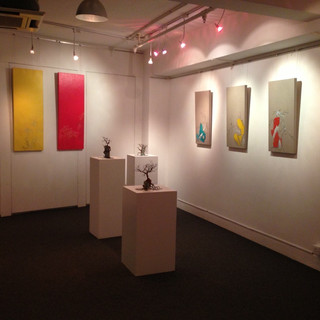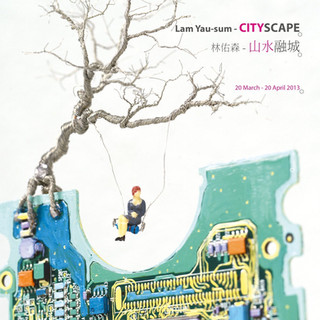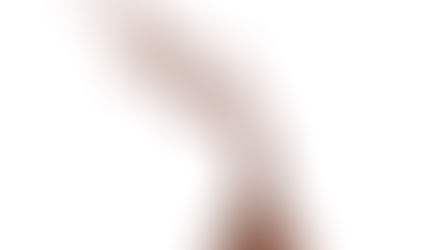山水融城 - 林佑森Cityscape - Lam Yau-sum
- Lam Yau Sum
- 2013年3月20日
- 讀畢需時 3 分鐘
Fritz Lang's Metropolis, Stanley Kubrick's 2001: A Space Odyssey, James Cameron's Terminator – they all deal with the interdependence and relationship between technology, nature and human. Whether it is the robot, the computer or the “cybot”, these characters embody the quintessential futuristic visions that are created by and now affecting human. Only a power struggle threatens our own existence when we opt to embrace retrospection. As the natural environment known to us slowly engulfed by new technologies, we desperately look for solution or way out otherwise passively accepts the transfer of power. At the heart of these films, they project a philosophical irony: is technology overtaking nature or simply becoming our “known” nature.Lam Yau-sum's new miniature landscape provides an interesting interpretation of this ironic question. Using a computer circuit board as the sculpture's main frame, Lam painstakingly removes the wirings from the board and “rewires” them into a tree. The tree becomes the focus. It wraps around and sometimes penetrates the frame, turning it into a landscape scene stabilizing by melted solder. A figure is positioned to give perspective and scale. The three components – circuit board, tree and figure – serve to interact and create a miniature scene of everyday life. While some pieces feature a large dominant tree overwhelming the board, others have smaller trees that appeared inferior and delicate. All trees, however, are withered, perhaps pointing to their “unnatural” fabrication (not wood but wires) or as metaphor of cold and lifelessness. The circuit board, on the other hand, serves not only a colorful and intricate backdrop but, given the scale of the figure, transforms into a building's façade. The composition, in such, has become essentially a street scene. It resembles a typical urban landscape that features more (if not all) man-made objects than natural plantations. The figure within appears comfortably indulged in his own activities, unaware and unaffected by this uncanny surroundings. In fact, the entire scene of Lam Yau-sum's “cityscape” is fabricated yet it looks utterly familiar. If that is the case, the futuristic visions of Lang, Kubrick and Cameron might indeed come true.What will happen to our perception of nature when our only recognition of it is composed of man-made objects and manipulations? What will happen to nature when we are so accustomed to and even accept this alternative? What will happen to us when we disregard our history and culture to make room for technological advancement?
Henry Au-yeung
February 2013
電路板代表了電子工業發展的重要性,它成功參與上人類史上的第三次工業革命,標誌著資本主義生產的發展歷程由傳統工業轉向更機械化、更自動化,從而減少了工作成本,使整個社會的運作模式再一次徹底改變。林佑森的作品經常由電路板上的線條而引發靈感,繼而直接於電路板上繪畫,畫面是否具像則由觀者心境而定。
林佑森是次所展出的立體作品中,讓我留意到他以小見大的舉動,這個縮景的動作與日本枯山水相近。枯山水庭園由細沙碎石鋪地,再加上一些疊放有致的石組所構成的縮微式園林景觀,造園者於沙子表面上畫出線條紋路,以表現水的流動。林佑森的的另一畫作系列 ─《皴》以海浪為題材,用白色線條勾勒出海浪的形體,當中參考了葛飾北齋的《神奈川外的巨浪》作品。自然界中的「水」對道家之言特別好用,「上善若水。水善利萬物而不爭」,「天下柔弱莫過於水,而攻堅強者莫之能勝」。透過水的特性引導人體悟趨下、柔弱、恬淡、虛靜的處世理念。
古人所畫的枯木怪石圖,怪怪奇奇,枯木怪石,盡吐壯志未酬、抑鬱與不平之氣,放棄對形似與寫實的追求,轉向神似意境,不求形似。今天林佑森《林石》系列中的枯樹已長出電路線的根,被棄電路板變成有機岩石,枯木怪石是環境污染加外太空輻射的預言圖。
古代人的山水觀(風景空間)並不是審美,更多是藉山水來表達自己的思想理念,我嘗試大膽假設林佑森的山水之思是什麼,其作品中出現的人物是疏離的,有枯寂之意,由電路板所構成的城市空間沒有與自然並生,《沉重》作品中隱見房屋平面圖,相信當中訊息對於今日港人共鳴萬分,面對住屋壓力,不禁令人反問工作後所獲得是生活還是生存?這樣的勞動是勞動者的本質嗎?
余琦琦
獨立策展人
2013年2月















































留言